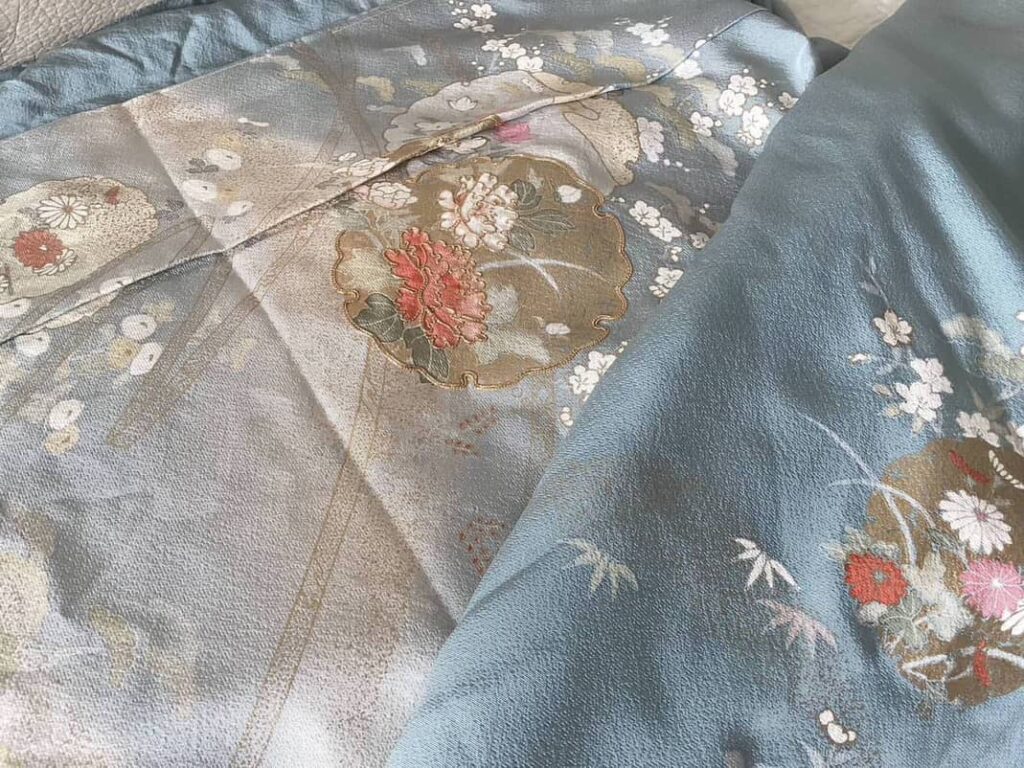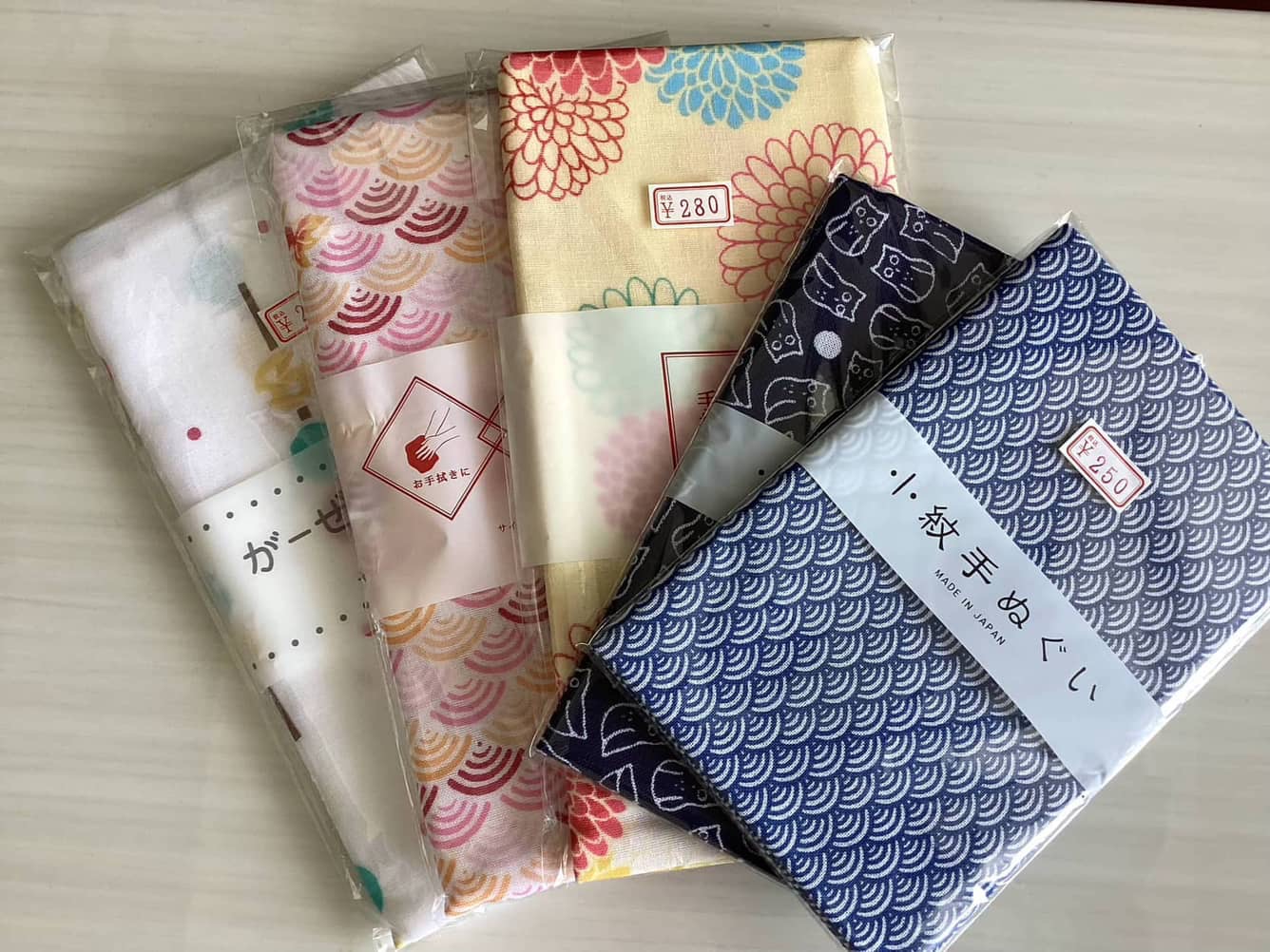
There was a concert at Ota Kumin Hall for which I had purchased tickets months in advance.
Naoto Sakiya (violin) & Kei Ito (piano)
The live performance of Mr. Sakiya’s delicate and gentle violin tone was very impressive.
After the performance, on my way back to Kamata Station, I stumbled upon a particular store. Despite its eclectic assortment of goods, I couldn’t help but wonder if it would soon close down. However, as I browsed through the items, I was pleasantly surprised by how retro and inexpensive they were.
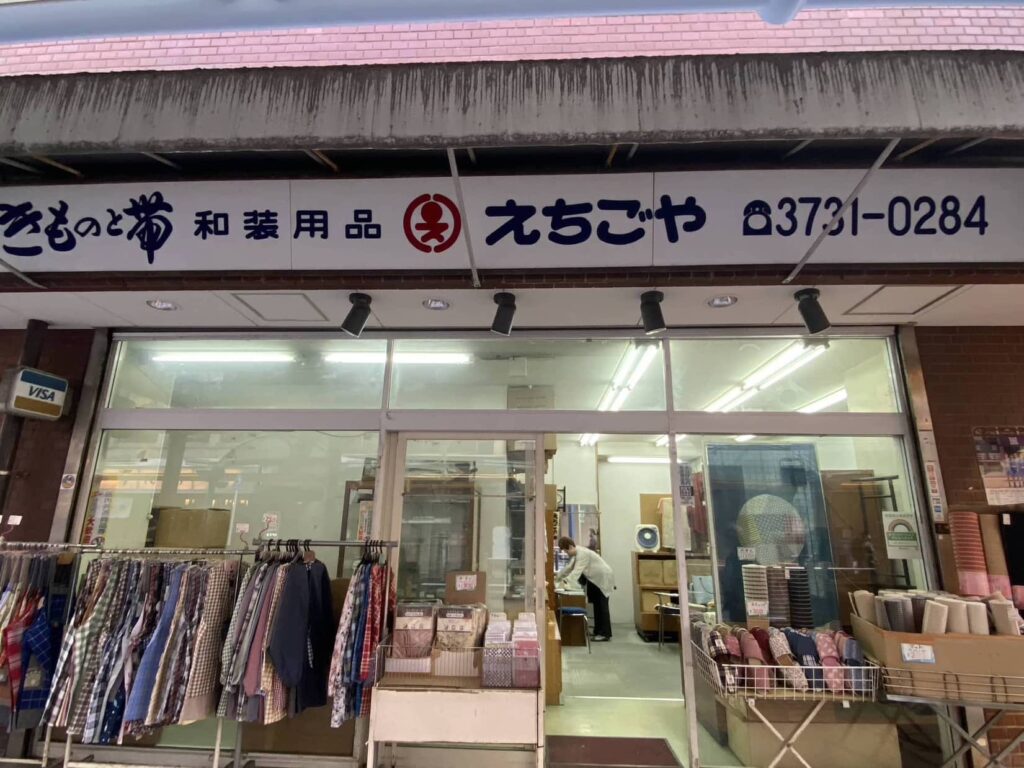
Echigoya is a kimono shop located at 5-25-2 Kamata, Ota-ku, Tokyo. It was established 72-73 years ago by the owner’s mother-in-law, who is now almost 100 years old. In the postwar period of the 1950s, kimonos were in high demand. However, today, there is no sign of that era, and the shopping street is shuttered and quiet despite its proximity to the station.
Shopping streets near train stations, which used to be lively, are in decline, not only in rural areas but also in Tokyo, which is no exception. Is it just me, or does it make you feel very sad? The casual conversations of shopkeepers, with their warm-heartedness, and the old-fashioned atmosphere of the stores made me feel comfortable, and I ended up staying there for a long time. I bought a lot of things and took the train home with a big bag. As I bought five mats, the shopkeeper apologized, saying, ‘Sorry for the weight.
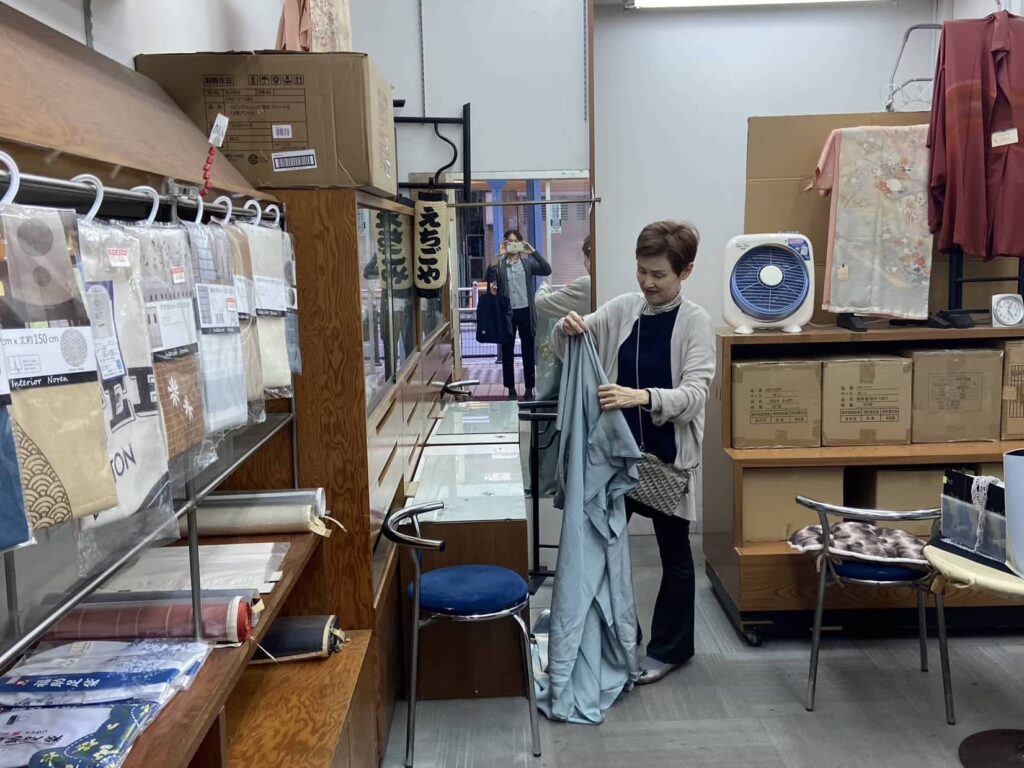
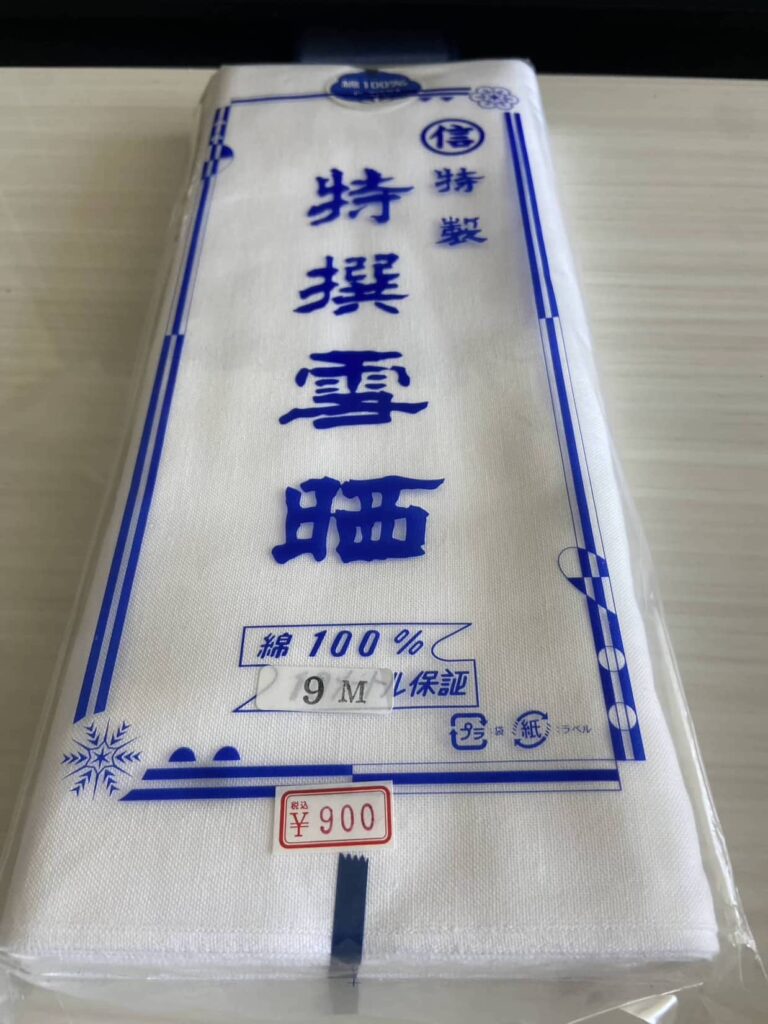
When I think of sarashi, I envision something wrapped around one’s abdomen during pregnancy. I’ve heard it referred to as ‘wrapping sarashi.’
However, I’ve never actually used one of these long pieces of rolled-up, woven cloth; instead, I used a ready-made belly band for pregnant women. While I knew the word ‘sarashi,’ this was the first time I had actually seen it.
The owner mentioned that sushi chefs always purchase them, stating they can’t do without it.
I learned that they are very useful when cooking, as they can be used in place of kitchen paper, are more convenient than kitchen paper, and even more eco-friendly.
It can be used in place of plastic wrap, as a coffee filter to smooth the taste, for straining, wiping, and draining. It is very convenient and eco-friendly; you can cut it to any length you like and wash it again and again because of its durability.
Although I have lived for more than half a century and stand in the kitchen every day, I had no idea that sarashi was such a thing.
Ways to use Sarashi:
I sometimes feel that it is wasteful to throw away plastic wrap after one use, so I spread out the clean ones and reuse them. Similarly, I find kitchen paper wasteful, so I tear it in half and reuse it. My daughters are always saying to me, “Mom, you have a tendency to be frugal.” They are constantly appalled by my behavior.
Now that I have found the most powerful item, “Sarashi,” I will try to use it in my daily life from now on.
Tenugui has become something we are not familiar with in our daily lives. After seeing a tenugui towel for the first time in a long time, I felt happy and bought them, exclaiming, “How cute!”
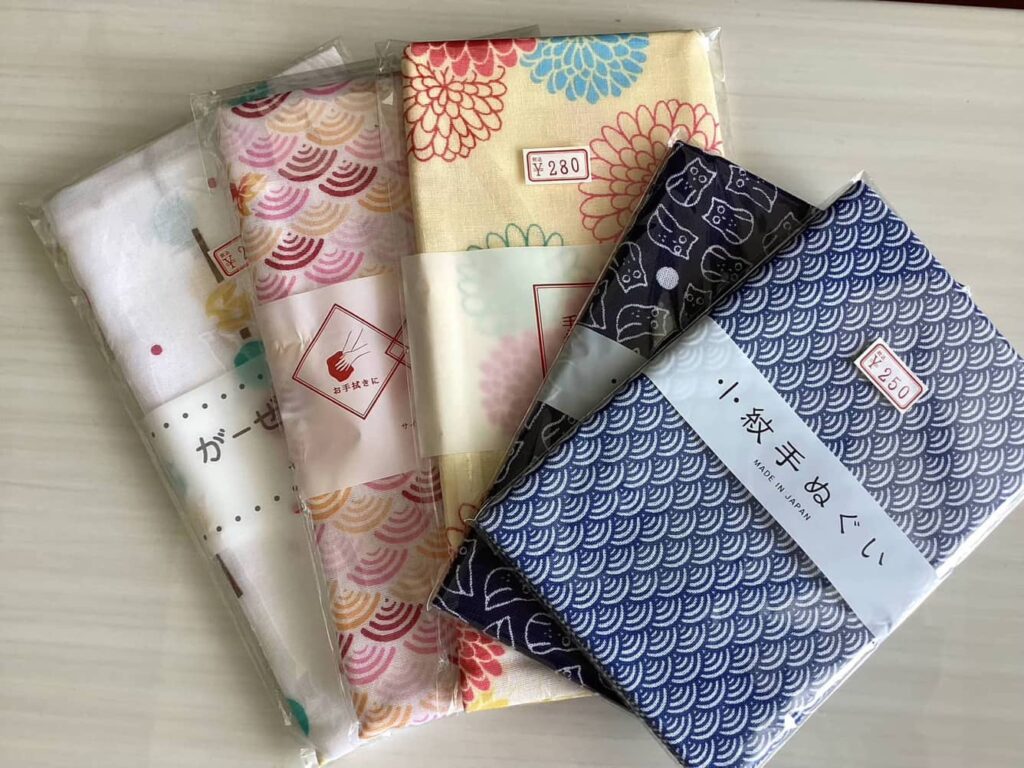
Tenugui is made of 100% cotton.
Did you know that the edges of the tenugui are left uncut? I didn’t know that. I’ve heard that the edges fray when washed, and that if you take care of them by cutting them each time, the fraying will gradually stop.
There is a reason why the ends are left uncut.
It is hygienic because it dries easily after getting wet, so germs do not stick to it, and dirt does not accumulate on the edges.
The usage of the tenugui hand towel is as follows.
An oshibori hot towel in English, is a wet hand towel offered to customers in places such as restaurants or bars, and used to clean one’s hands before eating.
*oshibori
What is the han-eri?
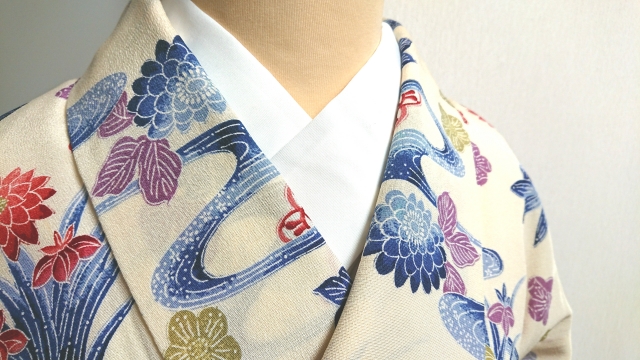
The han-eri in the photo is plain, but if the kimono pattern is plain, the half collar can be used as a pattern. Considering that the collar portion tends to accumulate sweat and dirt, a fabric with moisture-absorbent properties like a tenugui seems like a practical choice.
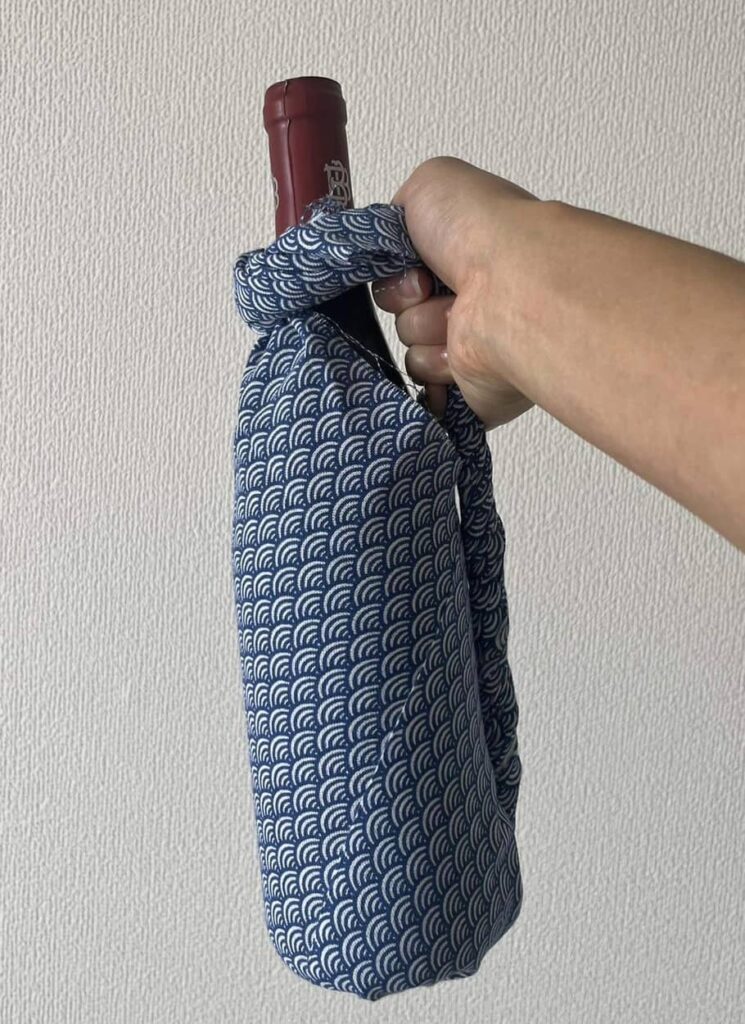
It is also a stylish way to bring wine as a gift, wrapping it in an eco-friendly tenugui towel that can be used over and over again.
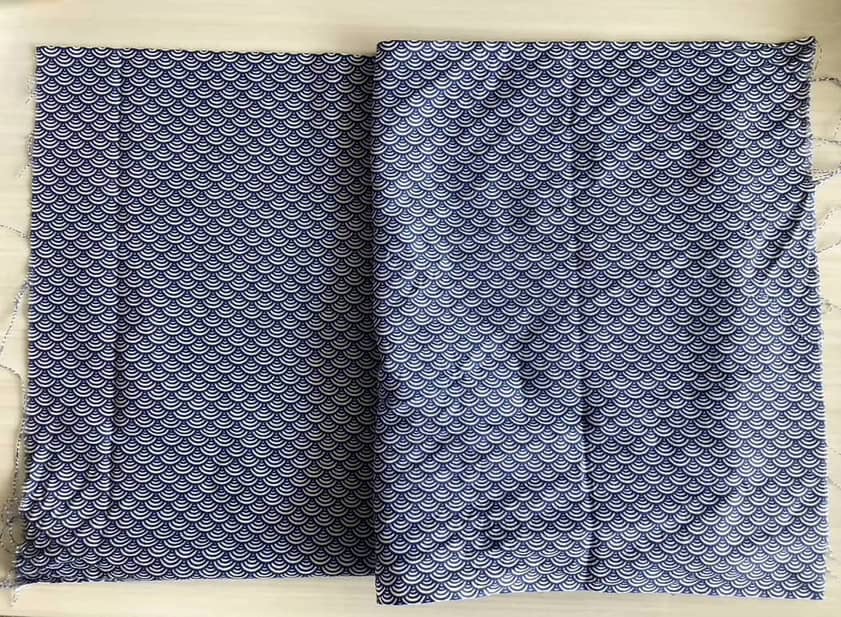
Tenugui is commonly available in lengths of 90cm, which are cut from a 33cm wide roll of cloth known as tenugui tanmono. For those interested in purchasing in bulk, a 9m tenugui cloth tanmono is also offered, providing enough fabric to produce around 10 pieces.
With my tenugui purchase, I also added a gauze tenugui to my collection. Unlike traditional tenugui, its edges are sewn, ensuring they won’t fray over time. While its size and material mirror those of the standard version—100% cotton—the gauze texture likely enhances its moisture absorbency and breathability.
Exploring the versatility and enjoyment of tenugui hand towels can bring convenience and delight. In today’s eco-conscious era, perhaps it’s time to revisit the practices of old Japan, where such items held significant value and purpose.
I have this vivid image of country ladies wearing white kappo-gi while coming together to prepare for a funeral, with everyone pitching in to cook a meal together.
I was thinking that I wanted an apron that would cover me up to both sleeves because my clothes get dirty when I’m gardening. That’s when I heard about ‘kappogi.’ It’s like the ones nursery school teachers wear
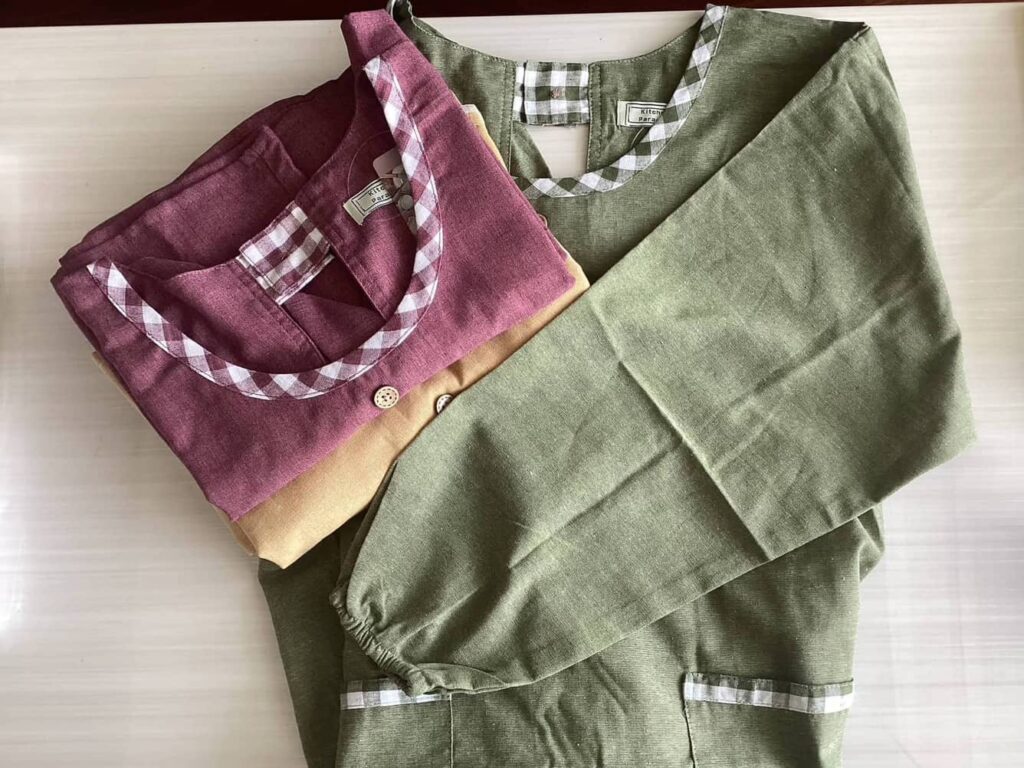
There are Western-style and Japanese-style kappogi.
Unlike the Western-style kappogi, the Japanese-style kappogi worn over a kimono has more generous dimensions and shape at the sides, sleeves, and collar.
Personally, when I think of a country woman in a kappogi, I picture an elderly lady in a rural area. In fact, it’s been a popular choice for a long time due to its convenience and affordability for various tasks.
By incorporating a few old-fashioned items into our everyday lives, we can create a stylish environment where we can unwind. I feel excited just thinking about it, and I would love to collect more Showa-era retro daily necessities.
I would like to express my gratitude to the owner of the long-standing kimono store in Kamata whom I met in the shopping arcade, for spending so much time with me. I will take good care of the 100% silk kimono I bought, and I will display it at our Japanese-style house in Yamakita, Kanagawa.
